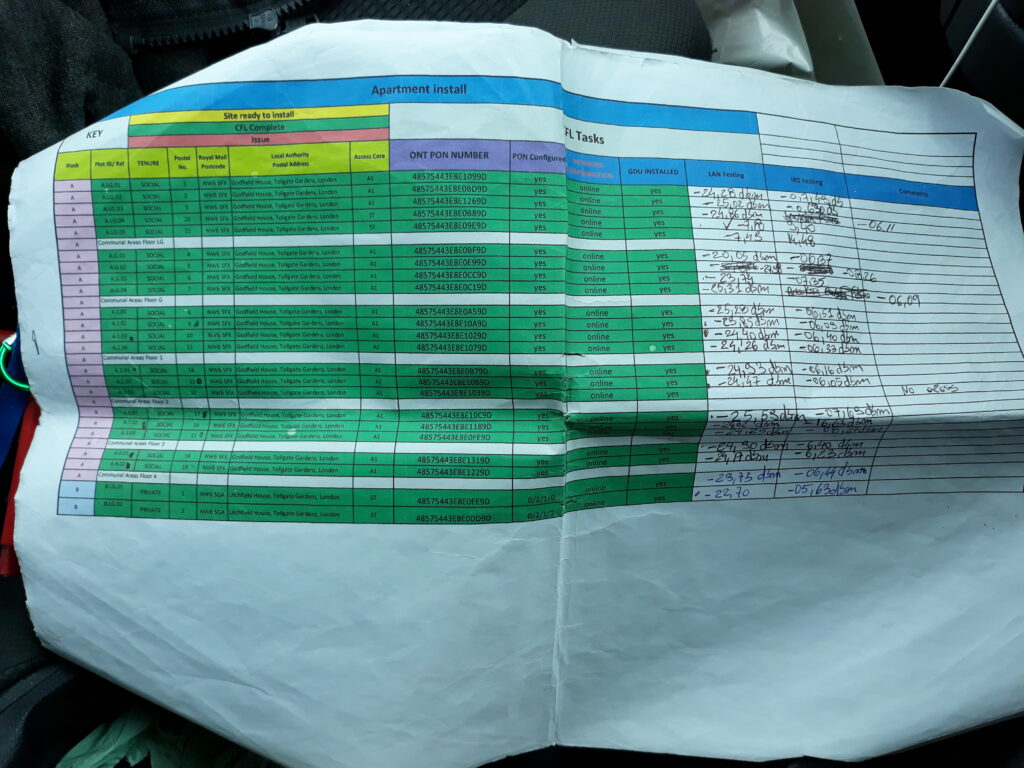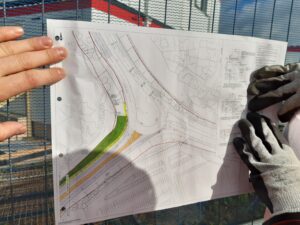PROJECT MANAGEMENT
SERVICES
The AZFO (A to Z Fibre Optic Ltd) discusses how standard project management processes apply to fiber optic cable plant project management
During the Project Initiation
phase, the initial scope of work is defined and initial financial resources are committed. The project
manager, assigned to the project, develops the project charter, which upon approval, the project
becomes officially authorized.
The
project charter provides the Project Manager with the authority to allocate resources to the project
activities.
A standard Project Charter highlights the business needs, current understanding of the customer’s
needs, and the product or service that is intended to satisfy

OUR PROJECT MANAGEMENT SERVICES
SOME MANAGED PROJECTS





PROJECT INITIATION
PROJECT INITIATION
The project initiation phase also includes the process referred to as Identify Stakeholders, which
consists of identifying all people and organizations impacted by the project and documenting all relevant
details regarding their interests, involvement, and impact on project success.
• Project purpose or justification
• Measureable project objectives and justification criteria
• High-level requirements
• High-level project description
• High-level risks
• Summary milestones schedule
• Summary budget
• Project approval requirements (What constitutes project success, who decides the project is
successful, who signs off on the project)
• Assignment of project manager, responsibility, and authority level
• Name and authority of the sponsor or the person authorizing the project
The fiber optic cable plant project initiation is centered on the following key processes:
Initiation Process Group
• Choose project manager
• Develop project charter

PLANNING PROCESS
PLANNING PROCESS
The project planning consists of developing the project
management plan and all relevant project documents to establish the project scope of work necessary
to achieve the project objectives. The project planning integrates all aspects necessary to execute the
work required throughout the project lifecycle, including scope, time, costs, communication, quality,
risk, and procurement
The Develop Project Management Plan process consists of documenting the necessary actions to define,
prepare, integrate, and coordinate all subsidiary plans. The project management plan determines how
the project will be planned, executed, monitored and controlled, and closed.
The major activity during the fiber optic cable plan project planning is based on the Design. The
following processes are included in the fiber optic cable plant Design Process Group.

EXECUTING PROCESS
EXECUTING PROCESS
The project execution includes all the processes necessary
to complete the work defined in the project management plan. The project execution consists of
coordinating people and resources, as well as integrating and performing project activities as specified
in the project management plan.
The fiber optic cable plant project execution phase is centered on the communication infrastructure
installation activities. The installation phase can be subdivided into the pre-installation, installation, and
post-installation phases.
The following paragraphs describe the breakdown of the processes involving each phase.
Pre-Installation Process Group:
• Choose contractor (s)/ installer
• Discuss/sign contract with the contractor (s) and hand sets of plans to contractor (s)
• Review components with contractor (s)
• Conduct procurement to choose equipment, components, and cable plant vendor (s)
• Order components, schedule delivery time and place
• Stock, inspect, and secure material
• Tour link route with contractor (s) and make note of special requirements
• Review contract with contractor (s)
• Review schedule with contractor (s)
• Review safety rules with contractor (s) and post rules on the jobsite
• Review restauration plan with contractor (s)
• Review test plan with contractor (s)
• Train installers on any new component installation or new equipment operation
• Prepare installation site and make power available
• Notify contractor(s) and all stakeholders of installation start date
Installation Process Group:
• Control workmanship compliance with specifications at every step
• Conduct daily review of process, progress, and test data
• Report issues and solutions and shortages to relevant stakeholders
Post-installation Process Group:
• Conduct final inspection of workmanship
• Review test data on cable plant
• Set up and test communications system

MONITORING PROCESS
MONITORING PROCESS
Monitoring includes status reporting, progress
measurement and forecasting. Performance report provides the project performance status in regards
to scope, schedule, cost, resource, quality, and risk.
Monitor and Control Project Work: Track, review, and regulate the progress to meet the performance
objectives defined in the project management plan. Monitoring includes status reporting, progress
measurement and forecasting. Performance report provides the project performance status in regards
to scope, schedule, cost, resource, quality, and risk.
Verify Scope: formalize acceptance of the complete project deliverables
Control Scope: Monitor the status and the project and product scope and manage changes to the scope
baseline
Control Schedule: Monitor the status and the project to update project progress and manage changes
to the schedule baseline
Control Costs: Monitor the status and the project to update project budget and manage changes to the
cost baseline

CONTROLING PROCESS
CONTROLING PROCESS
Closing consists of executing the processes
necessary to finalize all activities and formally complete the project or contractual obligations. The
Project Closing may include the following:
• Obtain acceptance by the customer or sponsor
• Conduct post-project review
• Record impact of tailoring to any process
• Document lessons learned
• Archive all relevant project documents in the Project Management Information System (PMIS)
• Close out procurements
Control Risks: Implement risk response plan, track identified risks, and evaluate risk
process effectiveness throughout the project.
Administer Procurements: manage procurement relationships, monitor contract performance, and
make changes and corrections as necessary
• Control workmanship compliance with specifications at every step
• Conduct daily review of process, progress, and test data
• Report issues and solutions and shortages to relevant stakeholders

CLOSING PROCESS
CLOSING PROCESS
Closing consists of executing the processes
necessary to finalize all activities and formally complete the project or contractual obligations. The
Project Closing may include the following:
• Obtain acceptance by the customer or sponsor
• Conduct post-project review
• Record impact of tailoring to any process
• Document lessons learned
• Archive all relevant project documents in the Project Management Information System (PMIS)
• Close out procurements
The Project Closing includes the following processes:
Close Project: finalize all project activities to formally complete the project
Close Procurements: Complete each project procurement
Closing Process Group:
• Update and complete documentation
• Update and complete restoration plan
• Store restoration plan, documentation, and components, etc.
• Document lessons learned
• Archive all relevant project documents in the Project Management Information System (PMIS)
• Close out procurement
If you’d like to contact us and get in touch with us requesting any of our Electrical & Mechanical services, surveys or quotations you can do so by phone, email or by post. If you email us, we’ll always contact you within 1 working day.

